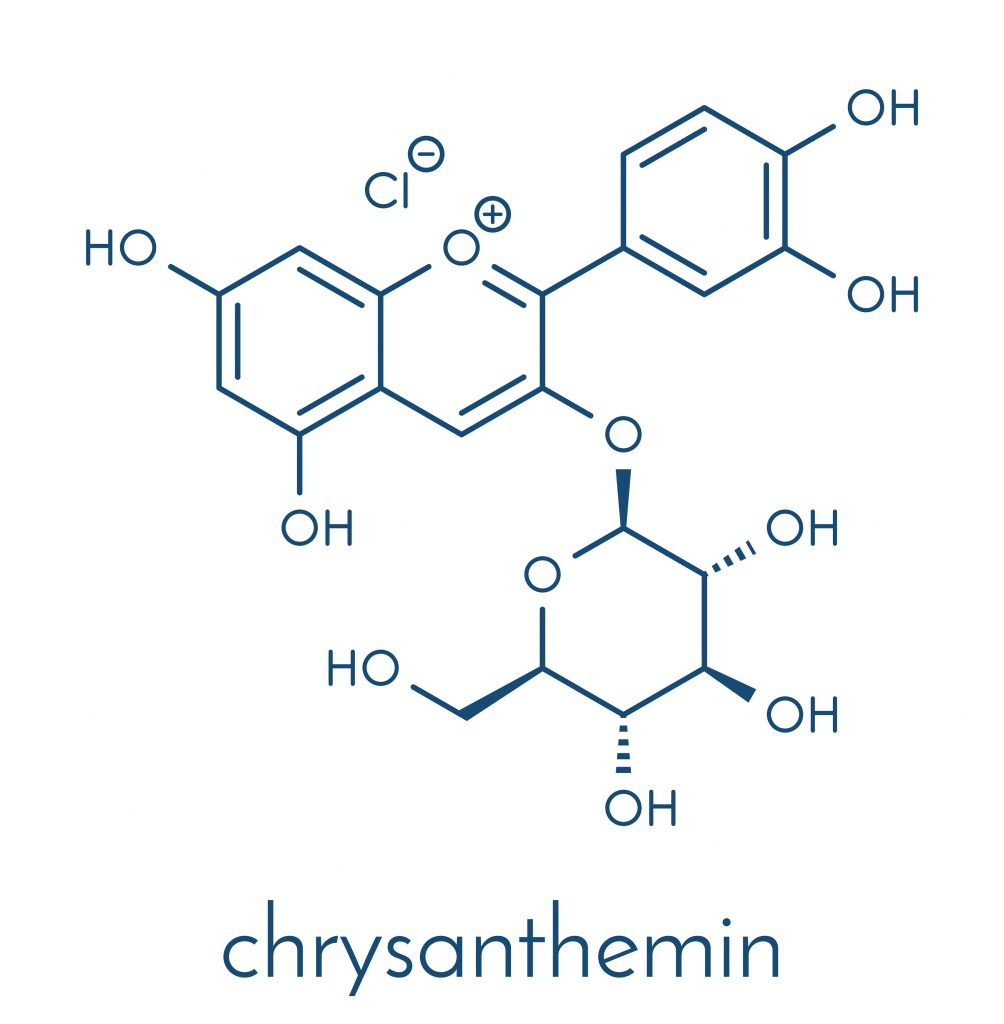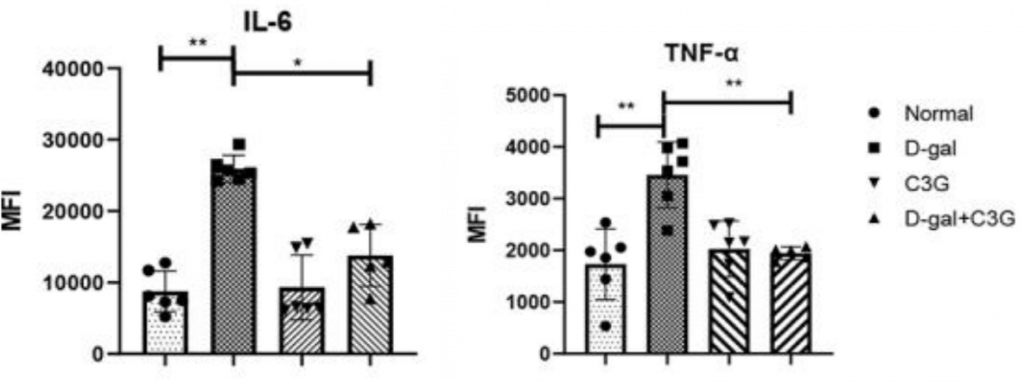Key Points:
- Treatment with C3G reduces inflammatory markers in the blood while increasing NAD+ and longevity-associated protein sirtuin 6 in the heart tissue of age-accelerated mice.
- C3G reduces multiple age-related markers, including senescent cells — cells associated with driving the aging process.
C3G, a molecule that gives some fruits their deep purple hue, is a natural inhibitor of CD38 — an enzyme on the surface of our immune cells. While CD38 is a critical component of our immune system, it becomes overactive with aging. And since CD38 depletes NAD+, its overactivity may be the primary reason for NAD+ declining with age. Furthermore, inhibiting CD38 has been shown to improve exercise performance and increase the lifespan of mice, suggesting that inhibiting CD38 with C3G could have pro-longevity properties.
Now, Zhou and colleagues from the Affiliated Hospital of Qingdao University in China report in Aging that inhibiting CD38 with C3G ameliorates multiple aspects of aging. In a mouse model for aging, they show that C3G reduces markers of blood inflammation and increases NAD+ and sirtuin 6 levels in heart tissue. Furthermore, in a cell model for aging, C3G increases telomerase gene activity and reduces ROS and senescent cells.

C3G Reduces Inflammation, Raises NAD+, and Elevates Sirtuins in Age-Accelerated Mice
Scientists commonly study aging by injecting young mice with a sugar called D-galactose (D-gal), which artificially accelerates the aging process. Zhou and colleagues found that, compared to normal mice, untreated D-gal mice have higher levels of pro-inflammatory molecules, including IL-6 and TNF-α, circulating through their blood. However, treating D-gal mice with 25 mg/kg injections of C3G twice a week for 4 weeks reduces the concentration of these inflammatory markers, suggesting that C3G contributes to reducing age-induced inflammation.

Nicotinamide adenine dinucleotide (NAD+) fuels enzymes called sirtuins. Sirtuins are a family of seven enzymes associated with increasing the lifespan of mice. Sirtuin 6 is linked to reducing inflammation and stabilizing telomeres — sequences of DNA that promote cell survival, with implications for protecting against heart disease. As sirtuins and CD38 compete for NAD+, inhibiting CD38 could increase the NAD+ supply for sirtuins, like sirtuin 6.
Zhou and colleagues analyzed the heart tissue of D-gal mice and found a reduction in both NAD+ and sirtuin 6 protein levels. However, treatment with C3G increased both NAD+ and sirtuin 6 to levels similar to normal, young mice. These findings show that CD38 not only consumes NAD+ but also may inhibit sirtuin levels. Given that reductions in both NAD+ and sirtuins are associated with an increased risk of age-related disease, increasing NAD+ and sirtuin 6 may underly the benefits of C3G.

C3G Reduces Senescence in Cell Model for Aging
The accumulation of senescent cells has recently emerged as a driver of aging. Normal cells enter a senescent state in response to stress, like telomere shortening and excessive reactive oxygen species (ROS). However, increasing telomerase — an enzyme that lengthens telomeres — and reducing ROS may prevent senescence.
To model aging in cells, Abe and colleagues exposed rat heart cells (H9c2 cells) to D-gal. The D-gal cells had reduced telomerase gene activation and increased ROS. D-gal cell cultures (cells grown in a dish) also had increased levels of a marker for senescence called SA-β-gal. By treating D-gal cell cultures with CSG, the researchers increased telomerase gene activity and reduced ROS and SA-β-gal. These findings suggest that CSG can reduce senescence.
C3G for Alleviating Age-Related Diseases and Increasing Lifespan
C3G is known for its antioxidant and anti-inflammatory properties, much like other flavonoids. It was recently found that C3G increases the lifespan of worms, likely due to these properties. Additionally, animal and cell model studies suggest that C3G could be used to treat neurodegeneration by reducing brain inflammation. The findings of Zhou and colleagues, showing that CSG inhibits CD38 and raises NAD+ and sirtuin 6 levels, make CSG an even more promising longevity-associated molecule. More studies exploring the effects of CSG on boosting NAD+ and sirtuin 6 levels may provide valuable evidence supporting the effects of C3G, which can be found in supplement form, along with other anthocyanin-related extracts.